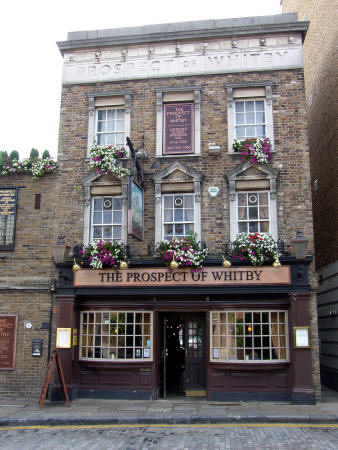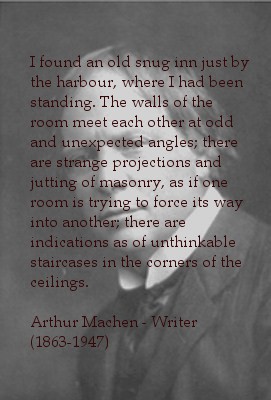



UNDERGROUND WHITBY





 Britain’s varied coastline has a long history of accommodating the enigmatic figure of the smuggler and his illicit trade. History shows that the golden age of smuggling began in the 18th century and continued on into the early part of the 19th century. The probable cause of this proliferation was the introduction of a new tax called excise, which combined with the already existing customs tax was used by consecutive governments as a means to fund the spiralling costs of Britain’s wars in Europe.
Britain’s varied coastline has a long history of accommodating the enigmatic figure of the smuggler and his illicit trade. History shows that the golden age of smuggling began in the 18th century and continued on into the early part of the 19th century. The probable cause of this proliferation was the introduction of a new tax called excise, which combined with the already existing customs tax was used by consecutive governments as a means to fund the spiralling costs of Britain’s wars in Europe.
Captain Hutchinson was quickly made Customs Officer, and, as the story goes, managed to avail himself of certain items of contraband before they were spirited away for ’trade’. Such was the extent of his dealings; he amassed not inconsiderable wealth and was able to afford to build a fine dwelling in Skinner Street which became know as 'Harold Mansion'. It is said that success breeds success. Captain Hutchinson knew how to manipulate such a virtue.
As time went on, he turned his mansion into a bordello that was frequently patronised by visiting seamen, servicing a trade that built wealth on wealth for the Captain. Extract taken from the BBC North Yorkshire website

The bordello
It also seems that the people of Whitby had no problem with dispelling the myth of the archetypal smuggler as the following extract shows:-
We are told that during the absence of the men folk at the whale fishery their women kept the home kegs running, and they showed considerable ingenuity in their methods. It was usual for them to fasten a stout leather belt round their waists, under their garments and ’ next their shifts’, and to this belt were hung, all round, bladders of gin or brandy. Extract taken from Whitby Lore and Legend’ By Shaw Jeffrey
In all, the sea port of Whitby during the 18th century was a busy and successful centre of trade, and it seems quite possible that the illegal trafficking of goods played no small part in the town's prosperity, as it was something that any able seafarer could easily turn his hand to with what seemed a very good chance of success.
Text and photographs by RICHARD LOCKER
"The King stopped at nothing to hunt his enemies. He cut down many people and destroyed homes and land. Nowhere else had he shown such cruelty.
To his shame, William made no effort to control his fury, punishing the innocent with the guilty. He ordered that crops and herds, tools and food be burned to ashes. More than 100,000 people perished of hunger. I have often praised William in this book, but I can say nothing good about this brutal slaughter. God will punish him."







Aeolidia papillosa
Although known as the Common Grey Sea Slug, the colour of the animals vary according to their local food supply, in this case the red sea anenomes on which it feeds have given it a rosy tinge. They can grow to 120mm in length, although this specimen is much smaller.

Perhaps the most villainous of the pub’s patrons was the 17th century nobleman ‘Hanging’ Judge Jeffreys. Known as the scourge of the Monmouth Rebellion, he was responsible for the putting to death of over 320 rebel supporters and sentencing a further 800 for transportation to the West Indies.
It was said that the Judge’s visits to the Devil’s Tavern would usually coincide with the hanging of local criminals at Execution Dock. He also enjoyed watching terrified felons being tied to posts on the river bank and left there whilst several tides washed over them. The scene is made all the more macabre by the fact that he was probably the very judge involved in sentencing these people to death.
Not all the pub’s customers were monsters, the famous writer and diarist Samuel Pepys was known to have frequented the establishment, although this was probably for no other reason than to carry out his numerous extra marital affairs in what he might have considered relative secrecy. He would often recount these infidelities in his diaries, as well as making several remarks about disturbances caused by the sailors in the Wapping area.
In 1777, after the Devil’s Tavern had been rebuilt because of damage sustained during a devastating fire, the landlord decided to rename the inn ’The Prospect Of Whitby’ after a square rigged collier called ‘The Prospect’. Built and registered in Whitby, the ship would often be found moored up outside the tavern after delivering it’s intended shipment of coal from the North-Eastern coal fields of County Durham and Newcastle.
In fact the ship became so much of a landmark, that the local people began referring to the pub as ’the one by the Prospect Of Whitby’. So like the Devil’s Tavern before it the name remained, right up until the present day where it is still possible to venture down to the banks of the Thames and buy yourself a pint in what is still considered to be the oldest pub in London.
 A victim of The Judge
A victim of The Judge
